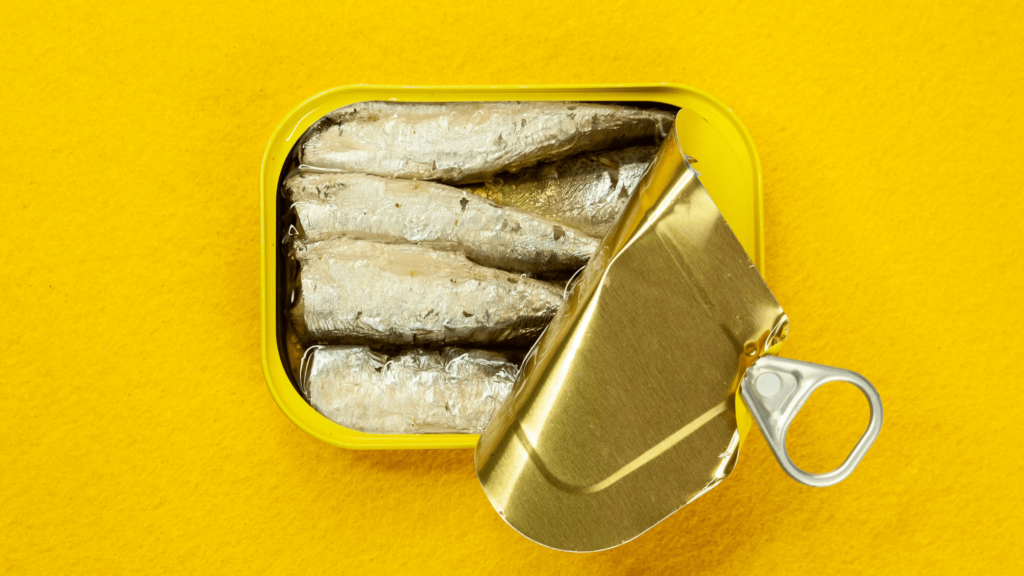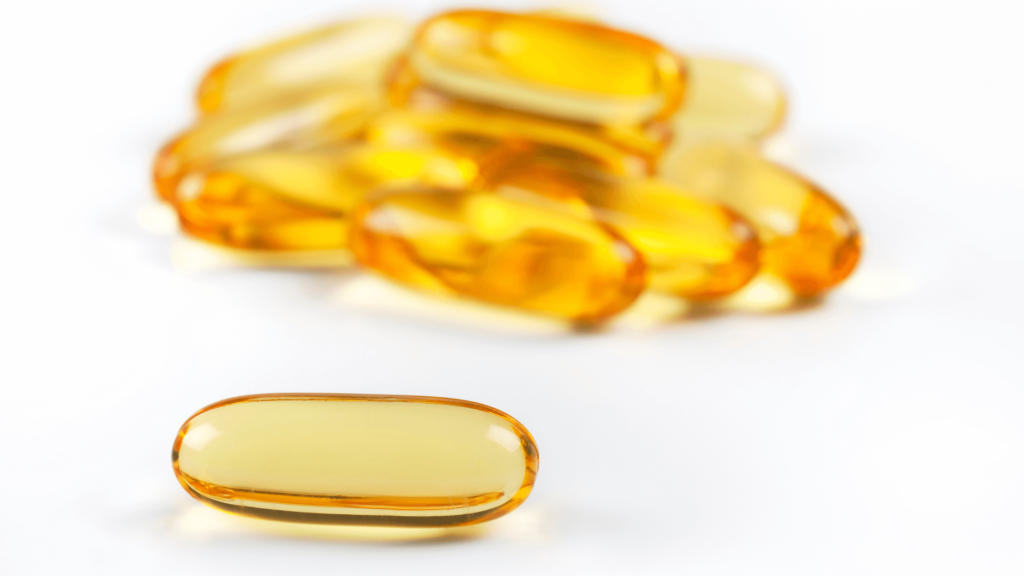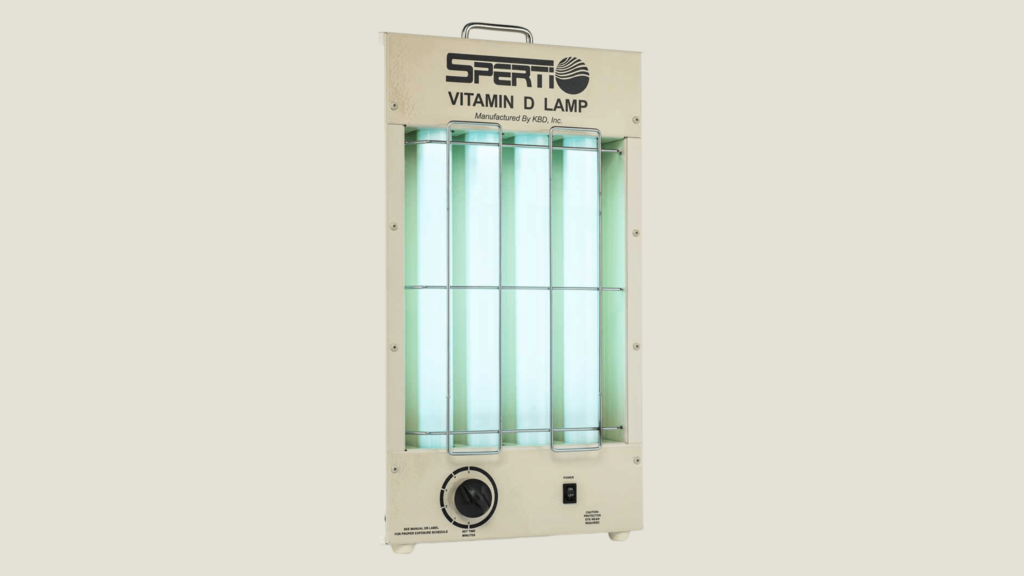Vitamin D is essential for keeping your bones strong, boosting your immune system, and even lifting your mood. As the days get shorter and the sun isn’t as strong, it can be tricky to get enough vitamin D, leaving you feeling run-down or a bit off. The good news? There are some easy ways to keep your vitamin D levels up during those chilly fall and winter months. Vitamin D-rich foods like cold-water fatty fish, vitamin D lamps, and supplements like cod liver oil are some of the easiest ways to bolster vitamin D levels with less sun exposure.
The deets on vitamin D
Vitamin D, also known as the “sunshine” vitamin, is a fat-soluble vitamin crucial to overall health. It’s involved in bone health by helping your body absorb calcium, among other key roles like supporting immunity and mood.
Vitamin D helps bones stay strong, supports the immune system, and helps reduce inflammation. Research shows that low levels of vitamin D can lead to an increased risk of illnesses such as osteoporosis, heart disease, and even depression.
During the colder months, our exposure to sunlight naturally decreases, and sunlight is a critical factor in endogenous vitamin D production. The sun’s UVB rays are less direct in the fall and winter, especially for those living in northern latitudes, making it much harder for our skin to produce sufficient vitamin D. Plus, shorter days mean fewer opportunities to soak up the sun, contributing to potential deficiencies during this time of year.
The effects of less vitamin D
Nearly 50% of the global population has insufficient vitamin D levels, with around 1 billion people of all ages and ethnicities experiencing a vitamin D deficiency (VDD). When your body doesn’t get enough vitamin D, it can show some pretty noticeable signs in the short and long term. Let’s break down what you might experience when vitamin D levels drop.
Short-term effects
One of the first things you might notice is a lack of energy. Fatigue is a common symptom of low vitamin D levels. Vitamin D deficiency can also cause bone pain and muscle weakness, as this vitamin is essential for calcium absorption, which keeps bones strong and healthy. A weakened immune system is another short-term effect, making you more susceptible to colds and infections.
Long-term effects
If vitamin D deficiency goes unchecked, it can lead to more severe health concerns. One of the significant risks is osteoporosis; inadequate vitamin D levels can result in bone loss, increasing the risk of fractures. In the long term, insufficient vitamin D has also been associated with cardiovascular diseases and an increased risk of heart disease. Some types of cancers, particularly colorectal and breast cancers, have also been connected to low vitamin D.
Mood disorders, like depression, are another concern. Several studies suggest that people with low vitamin D levels are more likely to experience symptoms of depression and seasonal affective disorder (SAD). This might be because vitamin D receptors are present in areas of the brain that regulate mood, indicating its potential impact on mental health.
How to get more vitamin D (when you can’t get it from the sun)
When sunlight is in short supply, there are still plenty of ways to boost your vitamin D levels. Let’s start with what you can add to your diet.
Diet

Cold-water fatty fish: If you’re a seafood lover, you’re in luck! Cold-water fatty fish like salmon, mackerel, and sardines are some of the richest natural sources of vitamin D. According to the USDA, a 3.5-ounce (100-gram) serving of cooked salmon can provide up to 66% of your daily vitamin D needs. Incorporating these types of fish into your meals a couple of times a week is a tasty and effective way to maintain healthy levels.
UV-exposed mushrooms: For those seeking a plant-based option, UV-exposed mushrooms are a fantastic choice. Like our skin, mushrooms can produce vitamin D when exposed to sunlight. A study published in the Journal of Nutritional Biochemistry found that mushrooms exposed to UV light can contain up to 450 IU of vitamin D per 100 grams. Look for UV-labeled mushrooms at the grocery store, or if you have fresh mushrooms at home, place them under direct sunlight for a few hours to give them a vitamin D boost.
Fortified foods: If fish and mushrooms aren’t your thing, don’t worry—fortified foods are here to help. Many common foods like milk, orange juice, and cereals are fortified with vitamin D. For example, a cup of fortified milk typically contains about 115-130 IU of vitamin D. Similarly, fortified orange juice offers around 100 IU per 8-ounce serving. Including these fortified foods in your daily diet can easily contribute to meeting your vitamin D needs, especially during the sun-scarce months.
Supplementation

When diet and sunlight aren’t enough, supplementation can be a convenient and reliable way to boost your vitamin D levels. Here’s how to make the most of it:
Cod liver oil: Cod liver oil is a powerhouse supplement that delivers a triple punch—omega-3 fatty acids, vitamin A, and vitamin D—all in one dose. It’s an easy way to get these essential nutrients, especially during the fall and winter. For example, Jigsaw Health Cod Liver Oil is an excellent choice for its high-quality sourcing and balanced nutrient profile. One tablespoon can provide up to 1,360 IU of vitamin D and a healthy dose of omega-3s, supporting bone health and immune function. It’s an excellent option for those looking for an all-in-one supplement!
Vitamin D supplements: If cod liver oil isn’t your style, a straight-up vitamin D supplement is a good alternative. While supplements are effective, they don’t boost serum levels quite as efficiently as natural sunlight exposure. Look for vitamin D3 (cholecalciferol) supplements for best results, as D3 is more effective at raising and maintaining your body’s vitamin D levels than D2. The Endocrine Society suggests a daily intake of 600-800 IU for most adults. Still, it’s always wise to check with your healthcare provider to determine the proper dosage for your needs.
Vitamin D lamps

Vitamin D or UVB lamps are specially designed to mimic natural sunlight by emitting UVB rays. These rays trigger vitamin D production in your skin, just like when you spend time outside on a sunny day. They’re particularly useful in fall and winter when sunlight exposure is limited or if you live in a region with long, dark winters.
While these lamps can be a great way to boost your vitamin D levels, they must be used correctly to avoid potential skin damage. Always follow the product instructions, and limit your exposure time to avoid overuse. Most manufacturers recommend using the lamp for 10-15 minutes two to three times a week. Keep the lamp at the recommended distance (usually around 18-24 inches from your skin). And, as with any new health regimen, consult with a healthcare provider before adding a vitamin D lamp to your routine to ensure it’s the right choice for you.
Maximize the sun you do have
As a construction worker, you’re already spending a reasonable amount of time outdoors, which can work to your advantage to boost your vitamin D levels. The key is being strategic about when you’re outside to maximize the available sunlight.
Get outside during peak sunlight hours
Even on job sites, try to take breaks or tackle outdoor tasks between 10 a.m. and 2 p.m. During these peak hours, the sun’s UVB rays are more direct, making it easier for your skin to produce vitamin D. This can be especially helpful on cooler or cloudy days when maximizing sunlight exposure is crucial.
Spend 10–30 minutes in the sun
Aim to get 10–30 minutes of direct sunlight a few times a week to optimize vitamin D production. The exact time depends on factors like your skin tone, the weather, and how much skin is exposed. For example, lighter skin tones usually need about 10-15 minutes, while darker skin tones might require 20-30 minutes for the same effect. Applying sunscreen to protect your skin is a “bright” idea if you plan on longer exposure.
Get your vitamin D levels tested
Checking your vitamin D levels is one of the most effective ways to understand your body’s needs and prevent potential deficiencies.
Vitamin D deficiency is surprisingly common and can easily go unnoticed. Many of its symptoms, like fatigue and muscle weakness, can be mistaken for other health issues. By getting tested, you can pinpoint your specific vitamin D needs and adjust your diet, supplements, or lifestyle accordingly. It’s a simple step that can make a big difference in your overall well-being and help you avoid long-term health problems associated with low vitamin D.
If you live in Canada, it’s good to know that vitamin D testing isn’t typically included in the standard lab panels. In Ontario, for instance, you may need to pay for this test, but consider it a worthwhile investment in your health. Knowing your vitamin D levels gives you the information to take targeted steps to keep them in the optimal range, especially as the days get shorter.
Bottom line
Keeping your vitamin D levels in check is key to staying healthy, especially as the days grow shorter. Luckily, there are plenty of ways to ensure you’re getting enough—whether through your diet, supplements, soaking up some sun when you can, or getting a quick test to know where you stand. A little effort now can go a long way in helping you avoid deficiency and keep you feeling your best all year round.




4 comments